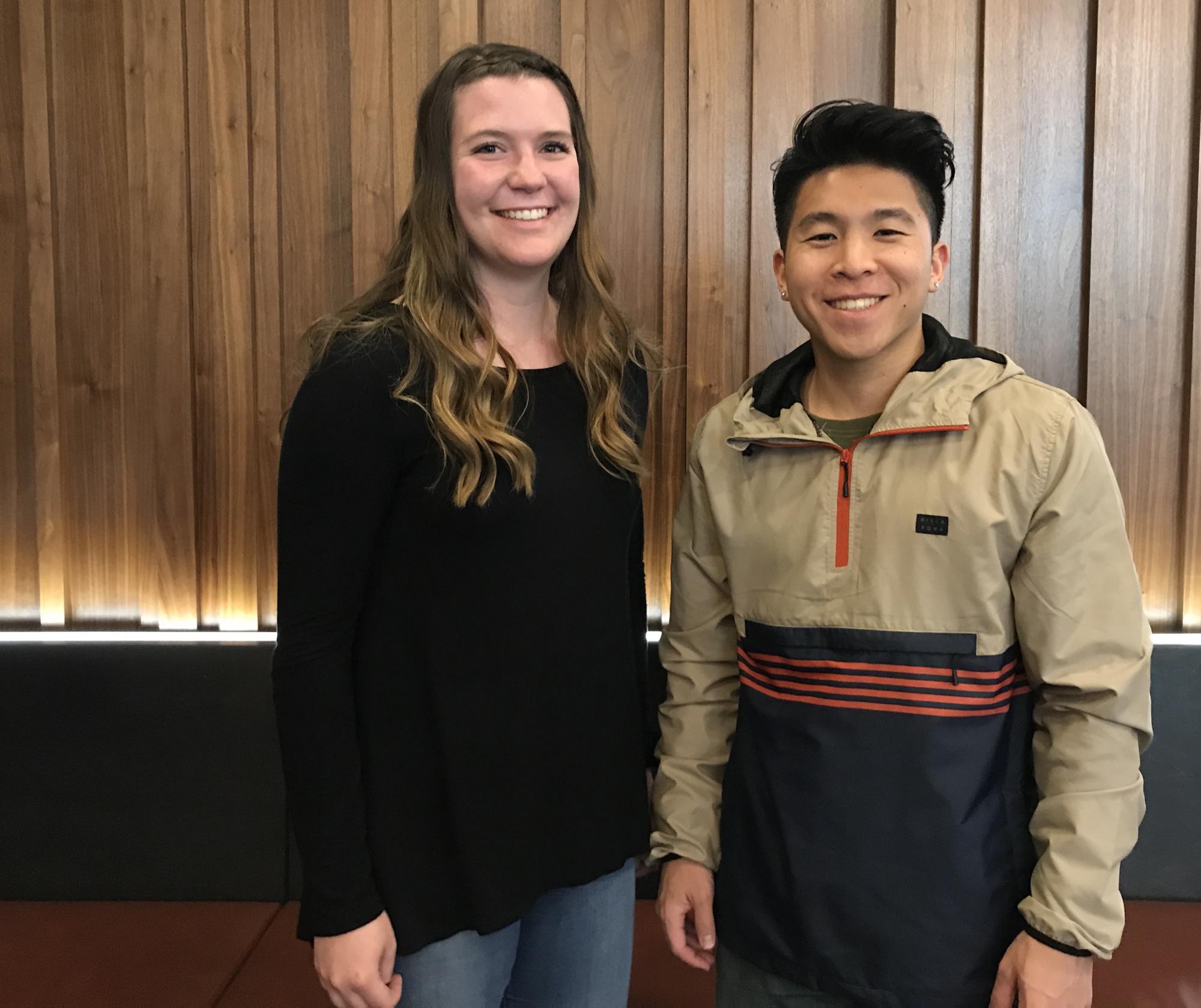Senior Project Finds Exercise May Help Fight Glaucoma

A new study by Pacific University faculty members and recent graduates Rayne Houser ’18 and Cody Tang ’18 found that aerobic exercise reduces intraocular pressure — which has positive implications for preventing and managing glaucoma, a leading cause of blindness and low vision.
For their senior capstone projects, Houser and Tang developed the study, carried out the research, and analyzed the results in collaboration with faculty members Ryan Bulson in the College of Optometry and Shawn Henry in the exercise science program. Houser and Tang graduated in May 2018 with bachelor's degrees in exercise science.
The goal of the interdisciplinary, intercollegiate project was to assess the effects of aerobic exercise on intraocular pressure, or the pressure inside the eye. Elevated intraocular pressure is a major risk factor for the development and progression of glaucoma, said Associate Professor Bulson, who undertook the study as part of his sabbatical project.
Previous research has shown that aerobic exercise may reduce intraocular pressure and have a protective effect for people with glaucoma or those at risk of developing it. The Pacific study not only demonstrated that exercise reduces intraocular pressure, but also showed that higher-intensity exercise has the most benefits in terms of reducing pressure.
Houser and Tang recruited 25 participants for the study (most of them Pacific students) and measured their intraocular eye pressure at rest (i.e., sitting) and after time spent walking, jogging and sprinting. Participants did their various exercises at the Stoller Center’s physiology lab. Following each exercise, Houser and Tang measured their intraocular pressure using a small handheld device called a rebound tonometer.
Houser said the study helped broaden her horizons as she prepares for the next stage of her academic career. In the fall of 2018, she’ll enroll in Duke University’s doctor of physical therapy program.
“If I want to get into research in the future, the study provided me with a foundation for creating an experiment with clinical applications,” she said.
Tang, who plans to attend medical school after taking a gap year, also said he gained valuable clinical experience.
“I want to go to medical school, so this study was a perfect set-up for clinical-based experience,” he said.
Houser and Tang presented their findings at the American College of Sports Medicine’s Northwest regional conference in February 2018. Professor Bulson also plans to present the study at the American Academy of Optometry’s annual meeting in November 2018. It will also be the subject of a paper expected to be published in a vision science journal.
“The exciting thing is that we know we have a scientifically sound finding,” said Bulson, noting that previous studies on the relationship between exercise and intraocular pressure were poorly designed from a scientific standpoint.
“With glaucoma and high eye pressure, the name of the game is reducing pressure, and normally that’s done through surgery and medication,” he said.
Bulson and Henry will continue their research during the 2018-2019 academic year, and have enlisted the help of two rising seniors. The next round of research will focus on how long the benefits of exercise last when it comes to lowering intraocular pressure.
Someday, exercise may come to be a valuable tool in the fight against glaucoma thanks in part to the research that Houser and Tang began as seniors at Pacific.
“It’s a shift in the way we think about how to treat this condition,” Bulson said.


